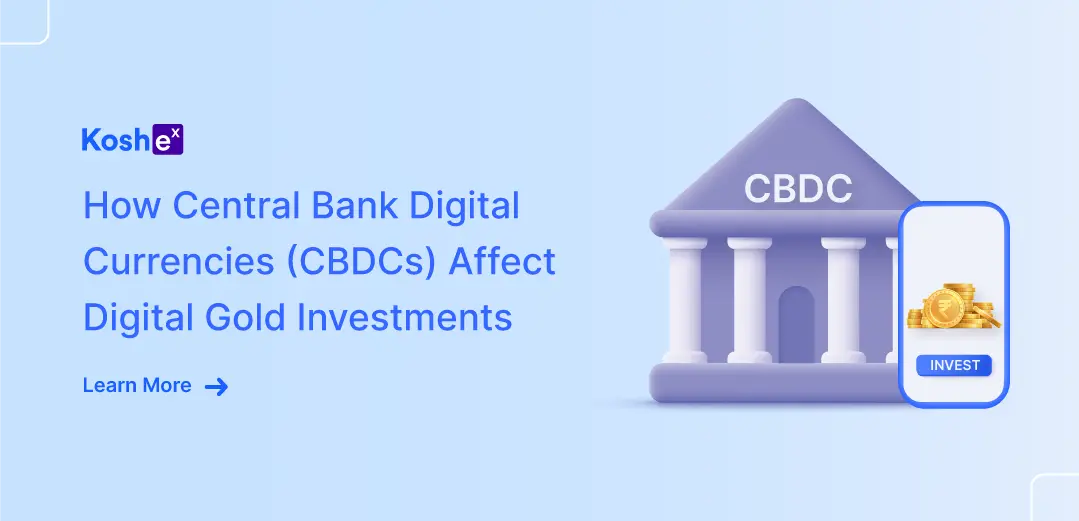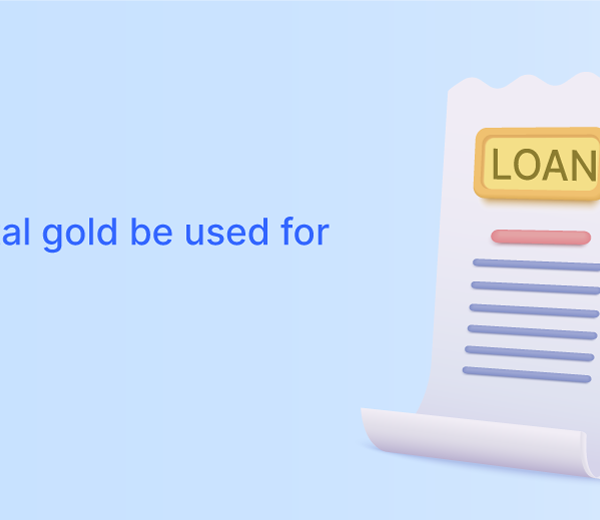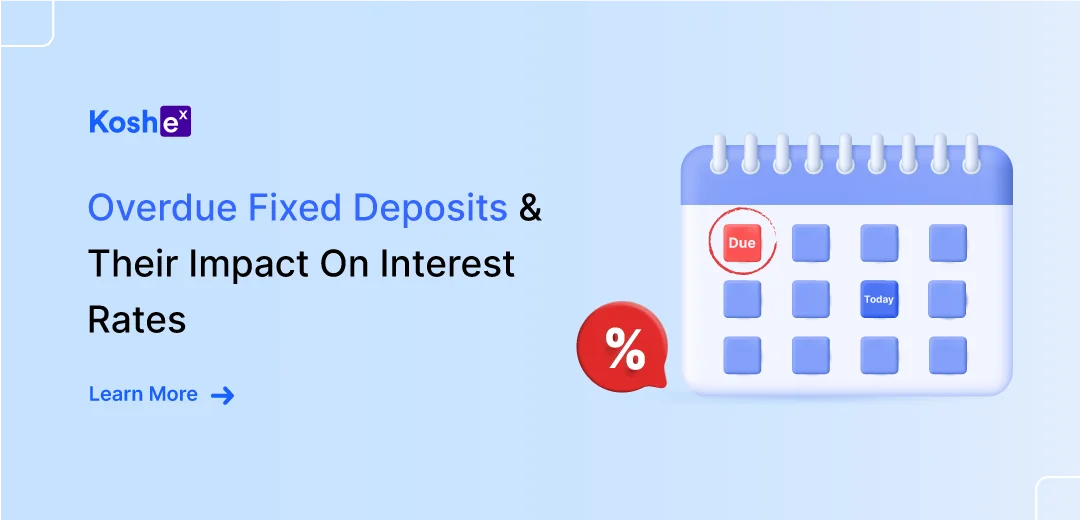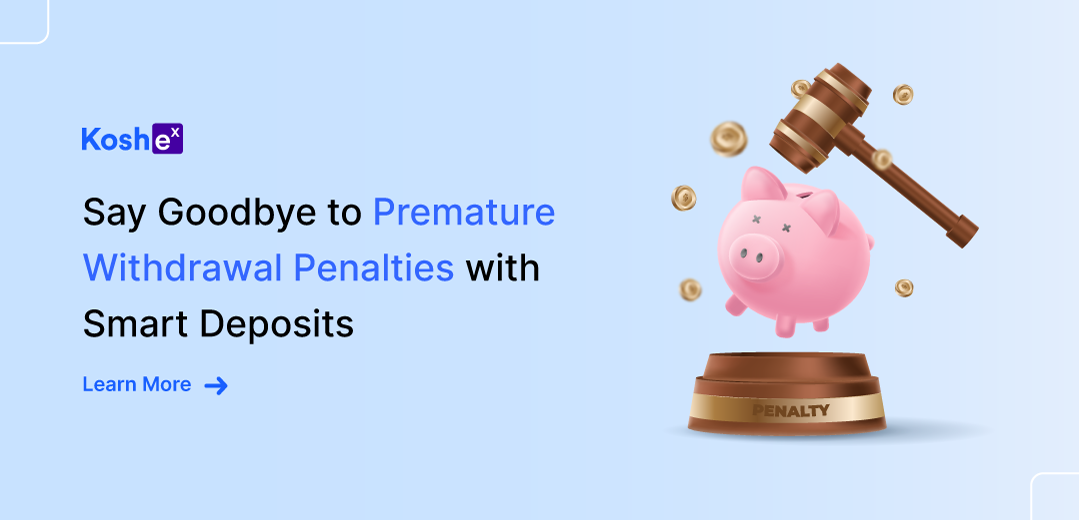In recent years, the world of finance has witnessed a profound shift toward digitalization, with Central Bank Digital Currencies (CBDCs) emerging as a revolutionary development. As nations explore the potential of issuing their digital currencies, it has sparked intriguing discussions about the impact on traditional investment assets.
Amongst these assets, digital gold investments have drawn considerable attention due to their historical significance as a store of value and a secure asset. If you are looking for personalized suggestions, sign up with Koshex today!
In this article, we will delve into the fascinating realm of CBDCs and their potential implications on the dynamics of digital gold investments.
Understanding Central Bank Digital Currencies (CBDCs)
Central Bank Digital Currencies are digital representations of a nation’s fiat currency, issued and backed by the central bank. Unlike cryptocurrencies like Bitcoin or Ethereum, CBDCs are not decentralized and retain the full faith and credit of the issuing government. The primary goal of CBDCs is to offer a digital alternative to physical cash, making transactions faster, more efficient, and cost-effective.
Advantages of CBDCs
- Enhanced Financial Inclusion: CBDCs have the potential to bring financial services to the unbanked and underbanked populations, fostering greater financial inclusion and economic empowerment.
- Seamless Cross-Border Transactions: CBDCs can facilitate cross-border transactions, eliminating the need for intermediaries and reducing transaction costs and processing times.
- Monetary Policy Implementation: CBDCs provide the central bank with more control over monetary policy, enabling better management of inflation, interest rates, and economic stability.
- Transparency and Security: CBDCs can be built on distributed ledger technology, providing enhanced transparency and security in transactions, and reducing the risk of fraud and counterfeiting.
Central Bank Digital Currencies Impact on Digital Gold Investments
- Altered Perception of Safe-Haven Assets: Historically, gold has been perceived as a safe-haven asset during economic uncertainty and market turbulence. The introduction of CBDCs may shift this perception, as investors may view government-backed digital currencies as equally reliable safe-havens1. The level of trust placed in CBDCs and their performance during times of crisis will determine their impact on gold’s role as a store of value.
- Price Volatility and Market Demand: The launch of CBDCs could increase price volatility in digital gold and CBDCs as investors and governments assess their relative merits. Fluctuations in the value of CBDCs could impact investor demand for digital gold as a diversification tool. Additionally, CBDCs’ adoption may influence the demand for gold in countries where gold has been traditionally favored as a hedge against inflation or currency depreciation.
- Central Bank Gold Reserves: Some central banks hold significant gold reserves as part of their foreign exchange reserves. Adopting CBDCs might prompt central banks to reassess their gold holdings’ relevance and consider diversifying into digital assets. This potential shift in the central bank policies could have far-reaching implications for gold prices and demand.
- Competition with Digital Gold Platforms: As CBDCs gain popularity and widespread adoption, digital gold platforms may face increased competition. Investors may find CBDCs more convenient for transactions and storing value, potentially affecting the growth and profitability of digital gold investment providers. To remain competitive, digital gold platforms may need to innovate, offering unique features and benefits that differentiate them from CBDCs.
Investor Behavior and the Digital Gold Landscape
The success of digital gold investments can be attributed in part to the allure of decentralized and private transactions. However, the emergence of Central Bank Digital Currencies (CBDCs), which provide efficiency and supervision through central entities, could potentially impact investor tendencies. While some individuals may embrace the benefits of CBDCs, others may gravitate towards digital gold to preserve their privacy and financial autonomy.
The degree to which CBDCs will impact digital gold investments will depend on several factors:
- Regulatory Landscape: The regulatory framework surrounding CBDCs and digital assets will play a pivotal role in shaping investor sentiment and the overall market dynamics. Clear and supportive regulations can foster an environment where CBDCs and digital gold investments coexist and thrive.
- Technological Infrastructure: The efficiency and security of CBDCs will influence their adoption rate, potentially impacting digital gold investments as alternative stores of value. A robust and user-friendly digital infrastructure will be critical for CBDCs to gain widespread acceptance and usage.
- Macroeconomic Factors: The state of the global economy and monetary policies will also affect the attractiveness of CBDCs and digital gold as investment options. Economic uncertainties or geopolitical tensions may drive investors towards traditional safe-haven assets like gold, even in the presence of CBDCs.
Conclusion
The rise of Central Bank Digital Currencies represents a paradigm shift in the finance world, promising increased efficiency, accessibility, and control over monetary systems. As nations explore the potential of CBDCs, the implications on traditional investment assets, particularly digital gold, are a subject of significant interest and debate.
CBDCs’ influence on digital gold investments will be shaped by various factors, including the perception of safe-haven assets, price volatility, market demand, central bank policies, technological infrastructure, macroeconomic influences, and investor behavior. As the financial landscape evolves, understanding the dynamics between CBDCs and digital gold investments becomes crucial for investors and policymakers alike.
As we look toward the future, it is evident that the coexistence of CBDCs and digital gold investments will shape a more diversified and technologically advanced financial ecosystem. Embracing this transformation with a thoughtful approach can lead to a more resilient and inclusive global financial system, where traditional and digital assets play integral roles in securing wealth and driving economic growth.
Ready to kickstart your journey toward financial freedom? At Koshex, we are dedicated to helping millennials and Gen Z save and invest wisely. Our personalized suggestions, tailored to your preferences and financial needs, will guide you toward achieving your financial goals.
Whether you’re interested in mutual funds, digital gold, fixed deposits, or smart deposits, Koshex has got you covered. With Koshex, you’re in control of your financial future. Take the first step towards a brighter financial tomorrow, and sign up with Koshex now to unlock your path to financial success!
FAQs
What are Central Bank Digital Currencies (CBDCs)?
Central Bank Digital Currencies (CBDCs) are digital forms of a country’s official currency issued and regulated by its central bank. CBDCs aim to provide a secure and efficient means of digital transactions and can coexist alongside physical cash and other forms of digital money.
2. How do CBDCs affect digital gold investments?
CBDCs can impact digital gold investments in several ways. As CBDCs become more widely adopted, they may compete with digital gold assets as a store of value and medium of exchange. The availability of government-backed digital currencies could influence investor preferences and impact the demand for digital gold.









Leave a Comment